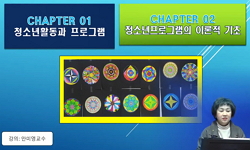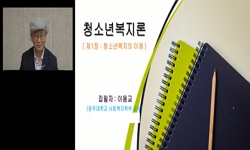Objective: This study focused on the longitudinal associations between self-esteem and peer relationships in Korean adolescents while considering gender and timing-early and late adolescence-differences. Methods: The study made use of data from the...
http://chineseinput.net/에서 pinyin(병음)방식으로 중국어를 변환할 수 있습니다.
변환된 중국어를 복사하여 사용하시면 됩니다.
- 中文 을 입력하시려면 zhongwen을 입력하시고 space를누르시면됩니다.
- 北京 을 입력하시려면 beijing을 입력하시고 space를 누르시면 됩니다.
https://www.riss.kr/link?id=A103340867
- 저자
- 발행기관
- 학술지명
- 권호사항
-
발행연도
2016
-
작성언어
Korean
- 주제어
-
KDC
598
-
등재정보
KCI우수등재
-
자료형태
학술저널
- 발행기관 URL
-
수록면
5-17(13쪽)
-
KCI 피인용횟수
4
- 제공처
-
0
상세조회 -
0
다운로드
부가정보
다국어 초록 (Multilingual Abstract)
Objective: This study focused on the longitudinal associations between self-esteem and peer relationships in Korean adolescents while considering gender and timing-early and late adolescence-differences.
Methods: The study made use of data from the Korean Children and Youth Panel Survey. Three waves of data collected from 2,351 adolescents were analyzed by means of autoregressive crosslagged modeling.
Results: The results indicated that self-esteem predicted subsequent changes in peer relationship but not vice versa. Further, the results that longitudinal associations between self-esteem and peer relationships differed between male and female adolescents and between early and late adolescence.
Conclusion: The findings revaluated the longitudinal relationship between self-esteem and peer relationships. Both gender and timing should be considered when planning interventions related issues about self-esteem and peer relationships in adolescence.
참고문헌 (Reference)
1 김주환, "한국 남녀 중학생 집단에서 자기결정성이 학업성취도에 주는 영향" 한국교육심리학회 20 (20): 243-264, 2006
2 차타순, "청소년의 자기애적 성격성향, 자존감, 적대감, 소외감과 비행성향간의 관계" 한국수산해양교육학회 21 (21): 409-419, 2009
3 홍세희, "인터넷 중독과 부모와의 의사소통 사이의 자기회귀 교차지연 효과 검증: 성별간 다집단 분석" 한국교육심리학회 21 (21): 129-143, 2007
4 김은경, "선형모형을 적용한 청소년기 애착의 변화양상에 관한 종단연구" 한국학교사회복지학회 32 : 357-384, 2015
5 이광성, "다문화가정자녀의 자아존중감이 사회적 적응에 미치는 영향에 관한 연구" 한국사회과교육학회 44 (44): 91-107, 2012
6 Kim, J. H., "Writing articles using structural equation modeling" Communication Books 2009
7 Todd D. Little, "To Parcel or Not to Parcel: Exploring the Question, Weighing the Merits" Informa UK Limited 9 (9): 151-173, 2002
8 Carol Lynn Martin, "The stability and consequences of young children's same-sex peer interactions" American Psychological Association (APA) 37 (37): 431-446, 2001
9 Armsden, G. C., "The inventory of parent and peer attachment: Individual differences and their relationship to psychological well-being in adolescence" 16 (16): 427-454, 1987
10 Sullivan, H. S., "The interpersonal theory of psychiatry" Tavistock 1953
1 김주환, "한국 남녀 중학생 집단에서 자기결정성이 학업성취도에 주는 영향" 한국교육심리학회 20 (20): 243-264, 2006
2 차타순, "청소년의 자기애적 성격성향, 자존감, 적대감, 소외감과 비행성향간의 관계" 한국수산해양교육학회 21 (21): 409-419, 2009
3 홍세희, "인터넷 중독과 부모와의 의사소통 사이의 자기회귀 교차지연 효과 검증: 성별간 다집단 분석" 한국교육심리학회 21 (21): 129-143, 2007
4 김은경, "선형모형을 적용한 청소년기 애착의 변화양상에 관한 종단연구" 한국학교사회복지학회 32 : 357-384, 2015
5 이광성, "다문화가정자녀의 자아존중감이 사회적 적응에 미치는 영향에 관한 연구" 한국사회과교육학회 44 (44): 91-107, 2012
6 Kim, J. H., "Writing articles using structural equation modeling" Communication Books 2009
7 Todd D. Little, "To Parcel or Not to Parcel: Exploring the Question, Weighing the Merits" Informa UK Limited 9 (9): 151-173, 2002
8 Carol Lynn Martin, "The stability and consequences of young children's same-sex peer interactions" American Psychological Association (APA) 37 (37): 431-446, 2001
9 Armsden, G. C., "The inventory of parent and peer attachment: Individual differences and their relationship to psychological well-being in adolescence" 16 (16): 427-454, 1987
10 Sullivan, H. S., "The interpersonal theory of psychiatry" Tavistock 1953
11 Karen D. Rudolph, "The Socioemotional Costs and Benefits of Social-Evaluative Concerns: Do Girls Care Too Much?" Wiley-Blackwell 73 (73): 115-138, 2005
12 Stanton, A., "The Oxford handbook of health psychology" Oxford University Press 241-268, 2011
13 Thomas J. Berndt, "The Features and Effects of Friendship in Early Adolescence" JSTOR 53 (53): 1447-, 1982
14 D. A. Blyth, "The Adjustment of Early Adolescents to School Transitions" SAGE Publications 3 (3): 105-120, 1983
15 Browne, M. W., "Testing structural equation models" Sage Publication 136-159, 1993
16 Rosalyn A. Rubin, "Stability of self-esteem ratings and their relation to academic achievement: A longitudinal study" Wiley-Blackwell 15 (15): 430-433, 1978
17 Rosenberg, M., "Society and the adolescent self-image" Princeton University Press 1965
18 Asher, S. R., "Social competence in developmental perspective" Kluwer Academic Publishers 5-23, 1989
19 R D Parke, "Social and Personality Development" Annual Reviews 34 (34): 465-509, 1983
20 Kathy D. McGuire, "Social Cognition and Behavior Correlates of Preadolescent Chumship" JSTOR 53 (53): 1478-, 1982
21 Florence R. Rosenberg, "Sex differences in the self-concept in adolescence" Springer Nature 1 (1): 147-159, 1975
22 Lynn M. Musser, "Self-monitoring in middle childhood: Personality and social correlates" American Psychological Association (APA) 27 (27): 994-999, 1991
23 Patrick M. O'Malley, "Self-esteem: Change and stability between ages 13 and 23" American Psychological Association (APA) 19 (19): 257-268, 1983
24 Barton J. Hirsch, "Self-esteem in early adolescence: The identification and prediction of contrasting longitudinal trajectories" Springer Nature 20 (20): 53-72, 1991
25 Murray, S. L., "Self-esteem and the quest for felt security: How perceived regard regulates attachment processes" 78 (78): 478-498, 2000
26 Coopersmith, S., "Self-Esteem Inventories" Consulting Psychologists Press 1981
27 Keunho Keefe, "Relations of Friendship Quality to Self-Esteem in Early Adolescence" SAGE Publications 16 (16): 110-129, 1996
28 Rys, G. S., "Relational aggression and peer relations : Gender and developmental issues" 43 (43): 87-106, 1997
29 Gabriel P. Kuperminc, "Relatedness, self-definition, and early adolescent adjustment" Springer Nature 21 (21): 301-320, 1997
30 Epstein, S., "Psychological perspectives on the self Vol. 2" Lawrence Erlbaurm Associates 219-247, 1983
31 Eric M. Vernberg, "Psychological adjustment and experiences with peers during early adolescence: Reciprocal, incidental, or unidirectional relationships?" Springer Nature 18 (18): 187-198, 1990
32 Harry Freeman, "Primary attachment to parents and peers during adolescence: Differences by attachment style" Springer Nature 30 (30): 653-674, 2001
33 Hymel, S., "Preschool children’s peer relations: Issues in sociometric assessment" 29 (29): 237-260, 1983
34 M. A. R. Townsend, "Popularity and Intimacy as Determinants of Psychological Well-Being in Adolescent Friendships" SAGE Publications 8 (8): 421-436, 1988
35 Asher, S. R., "Peer rejection in childhood" Cambridge University Press 253-273, 1990
36 Anna Gorrese, "Peer attachment and self-esteem: A meta-analytic review" Elsevier BV 55 (55): 559-568, 2013
37 Carollee Howes, "Patterns of Friendship" JSTOR 54 (54): 1041-, 1983
38 Deborah J. Laible, "Pathways to self-esteem in late adolescence: the role of parent and peer attachment, empathy, and social behaviours" Elsevier BV 27 (27): 703-716, 2004
39 Storch, E. A., "Overt and relational victimization and psychosocial adjustment in minority preadolescents" 32 (32): 73-81, 2002
40 Dean B. McFarlin, "On knowing when to quit: Task failure, self-esteem, advice, and nonproductive persistence" Wiley-Blackwell 52 (52): 138-155, 1984
41 Bandalos, D. L., "New developments and techniques in structural equation modeling" Lawrence Erlbaurm Associates 269-296, 2001
42 Richard W. Robins, "Measuring Global Self-Esteem: Construct Validation of a Single-Item Measure and the Rosenberg Self-Esteem Scale" SAGE Publications 27 (27): 151-161, 2001
43 Christopher C. Henrich, "Levels of Interpersonal Concerns and Social Functioning in Early Adolescent Boys and Girls" Informa UK Limited 76 (76): 48-67, 2001
44 Laurie R. McNelles, "Intimacy Between Adolescent Friends: Age and Gender Differences in Intimate Affect and Intimate Behaviors" Informa UK Limited 9 (9): 143-159, 1999
45 Kohlberg, L., "Handbook of child psychopathology" McGraw-Hill 1217-1284, 1972
46 Albano, A. M., "Handbook of behavioral and emotional problems in girls" Kluwer Academic/Plenum Publishers 79-116, 2005
47 Hartup, W. W., "Handbook of Child Psychology: Vol. 4. Socialization, personality, and social development" Wiley 103-196, 1983
48 Harter, S., "Handbook of Child Psychology: Vol. 3. Social, emotional, and personality development" John Wiley & Sons 553-617, 1998
49 Joyce F. Benenson, "Greater Preference among Females Than Males for Dyadic Interaction in Early Childhood" Wiley-Blackwell 64 (64): 544-555, 1993
50 Karen D Rudolph, "Gender differences in emotional responses to interpersonal stress during adolescence" Elsevier BV 30 (30): 3-13, 2002
51 Buhrmester, D., "Friendship and social interaction" Springer-Verlag 41-62, 1986
52 Gordon W. Cheung, "Evaluating Goodness-of-Fit Indexes for Testing Measurement Invariance" Informa UK Limited 9 (9): 233-255, 2002
53 A. L. Greene, "Early Adolescents' Perceptions of Stress" SAGE Publications 8 (8): 391-403, 1988
54 Patricia C. Broderick, "Early Adolescent Gender Differences in the Use of Ruminative and Distracting Coping Strategies" SAGE Publications 18 (18): 173-191, 1998
55 Roy F. Baumeister, "Does High Self-Esteem Cause Better Performance, Interpersonal Success, Happiness, or Healthier Lifestyles?" SAGE Publications 4 (4): 1-44, 2003
56 Li‐tze Hu, "Cutoff criteria for fit indexes in covariance structure analysis: Conventional criteria versus new alternatives" Informa UK Limited 6 (6): 1-55, 1999
57 Diener, E., "Culture and well-being" Springer 71-91, 2009
58 Woo. J. P., "Concept and understanding of structural equation model" Hannarae 2012
59 Furman, W., "Children’s peer relations:Issues in assessment and intervention" Springer 41-54, 1985
60 Jennifer E. Lansford, "Children's interactions in triads: Behavioral profiles and effects of gender and patterns of friendships among members" American Psychological Association (APA) 35 (35): 80-93, 1999
61 Shelley Hymel, "Children's Peer Relationships: Longitudinal Prediction of Internalizing and Externaliziing Problems from Middle to Late Childhood" Wiley-Blackwell 61 (61): 2004-2021, 1990
62 Berndt, T. J., "Childhood to adolescence:A transitional period?" Sage Publication 269-287, 1990
63 Cyd C. Strauss, "Characteristics of children with extreme scores on the children's depression inventory" Informa UK Limited 13 (13): 227-231, 2009
64 Savin-Williams, R. C., "At the threshold: The developing adolescent" Harvard University Press 277-207, 1990
65 Harter, S., "At the threshod: The developing adolescent" Harvard University Press 352-387, 1990
66 Jean M. Twenge, "Age, gender, race, socioeconomic status, and birth cohort difference on the children's depression inventory: A meta-analysis" American Psychological Association (APA) 111 (111): 578-588, 2002
67 Arbuckle, J. L., "Advanced structural equation modeling:Issues and techniques" Lawrence Erlbaurm Associates 243-277, 1996
68 Jill M. Cyranowski, "Adolescent Onset of the Gender Difference in Lifetime Rates of Major Depression" American Medical Association (AMA) 57 (57): 21-, 2000
69 Amanda J. Rose, "A Review of Sex Differences in Peer Relationship Processes: Potential Trade-offs for the Emotional and Behavioral Development of Girls and Boys" American Psychological Association (APA) 132 (132): 98-131, 2006
70 Jack Block, "A Longitudinal Study of Consistency and Change in Self-Esteem from Early Adolescence to Early Adulthood" Wiley-Blackwell 64 (64): 909-923, 1993
71 National Youth Policy Institute, "(2010-2014). Korean children and youth panel survey [Data file and code book]"
72 Wayne Martino, "'Cool Boys', 'Party Animals', 'Squids' and 'Poofters': Interrogating the dynamics and politics of adolescent masculinities in school" Informa UK Limited 20 (20): 239-263, 2010
동일학술지(권/호) 다른 논문
-
영유아교사윤리강령, 전통적인 도덕적 가치, 그리고 아동의 개인 정보 보호
- 한국아동학회
- 송하나(Hana Song)
- 2016
- KCI우수등재
-
- 한국아동학회
- 박하연(Ha-Yeon Park)
- 2016
- KCI우수등재
-
- 한국아동학회
- 신나리(Nary Shin)
- 2016
- KCI우수등재
-
아버지의 양육행동이 아동의 관계적 공격성에 미치는 영향
- 한국아동학회
- 김소라(So Rah Kim)
- 2016
- KCI우수등재
분석정보
인용정보 인용지수 설명보기
학술지 이력
| 연월일 | 이력구분 | 이력상세 | 등재구분 |
|---|---|---|---|
| 2022 | 평가예정 | 계속평가 신청대상 (등재유지) | |
| 2017-01-01 | 평가 | 우수등재학술지 선정 (계속평가) | |
| 2013-01-01 | 평가 | 등재학술지 유지 (등재유지) |  |
| 2010-01-01 | 평가 | 등재학술지 유지 (등재유지) |  |
| 2008-01-01 | 평가 | 등재학술지 유지 (등재유지) |  |
| 2006-01-01 | 평가 | 등재학술지 유지 (등재유지) |  |
| 2005-03-22 | 학술지명변경 | 외국어명 : 미등록 -> Korean Journal of Child Studies |  |
| 2003-01-01 | 평가 | 등재학술지 선정 (등재후보2차) |  |
| 1998-07-01 | 평가 | 등재후보학술지 선정 (신규평가) |  |
학술지 인용정보
| 기준연도 | WOS-KCI 통합IF(2년) | KCIF(2년) | KCIF(3년) |
|---|---|---|---|
| 2016 | 1.76 | 1.76 | 1.79 |
| KCIF(4년) | KCIF(5년) | 중심성지수(3년) | 즉시성지수 |
| 1.85 | 1.77 | 2.219 | 0.21 |






 ScienceON
ScienceON DBpia
DBpia





